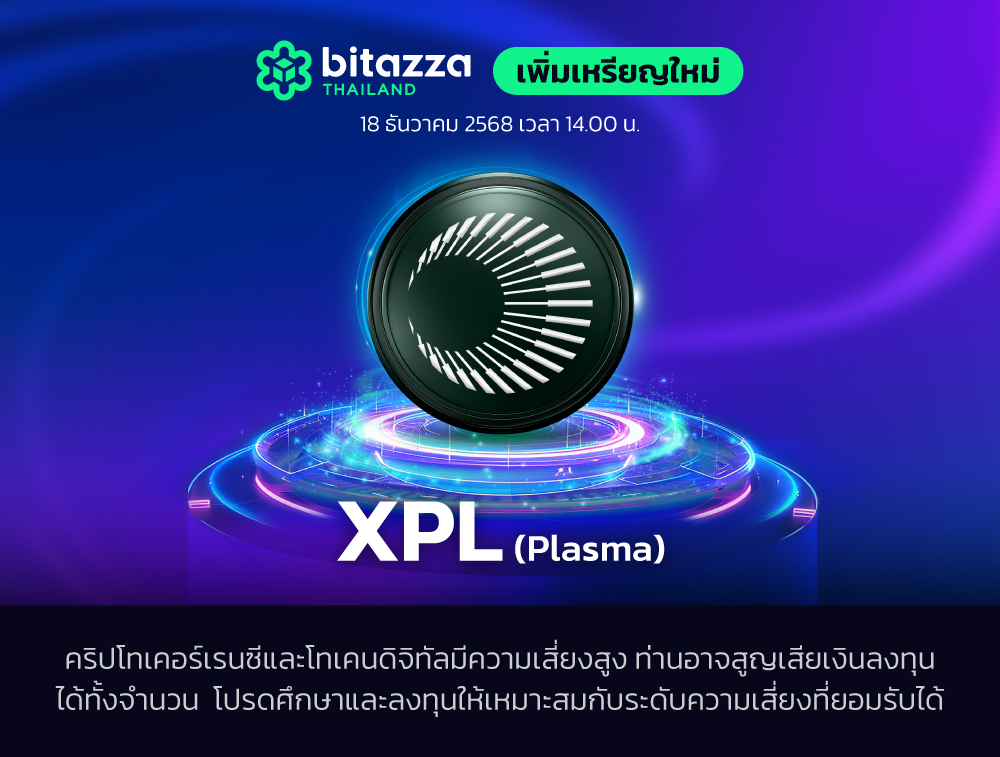Share this
What is Ethereum and Is ETH Still Worth Investing In?

No matter the current investment trend, Ethereum remains one of the most well-known names in the digital asset space. This article will guide you through what Ethereum is, the technology behind it, its use cases, the advantages and limitations to consider, the potential price outlook of ETH, and how to buy the token.
Latest News on Ethereum
- Ethereum is currently considering proposal EIP-9698, which aims to increase the gas limit from 30 million to 3 billion within the next few years. This would enhance transaction processing capacity and better support the network’s scalability. In addition, there are discussions about internal structural changes within the Ethereum Foundation and other important technical adjustments.
- According to Blockchain News, Ethereum is showing signs of a bullish trend reversal, with trading volume and on-chain activity increasing. The number of daily active addresses has grown by 12%, while staking deposits have risen by 8,000 ETH in the past 48 hours, which may indicate growing long-term confidence.
- As of April 2025, Ethereum accounted for 60% of the total value of tokenized Real-World Assets (RWA), reflecting its increasing acceptance as a blockchain platform for real-world asset integration. However, concerns remain over scalability issues that could pose challenges to future growth

What is Ethereum?
Ethereum is a decentralized blockchain platform that has developed and issued its own cryptocurrency called Ether (ETH). Blockchain technology enables the Ethereum network to provide security for digital transactions.
Compared to Bitcoin, the two cryptocurrencies share similarities as well as differences, each with their own advantages and limitations. Ethereum, however, uses a Proof-of-Stake mechanism to validate transactions and also serves as the foundation for many emerging technologies that originated from blockchain.

Differences Between Ethereum and Bitcoin
In reality, Ethereum and Bitcoin share several similarities, but at the same time, there are also notable differences that attract attention from both investors and developers.
When it comes to the positioning of the networks and their tokens, the founders of Ethereum envisioned their network as a “global programmable blockchain platform.” In other words, they see Ethereum as a network where developers can build applications using its available resources. Bitcoin, on the other hand, was designed primarily as an alternative medium of exchange, separate from traditional financial institutions.
Another key difference lies in the supply. Bitcoin has a capped supply of 21 million coins, whereas Ethereum has no maximum limit on the number of tokens that can be created.
Most importantly, transaction fees between the two networks differ significantly. On Ethereum, gas fees are paid by participants who perform transactions, and part of those fees are burned by the network. In contrast, on the Bitcoin network, miners receive and cover transaction fees.

What is Ethereum 2.0
Ethereum 2.0 is the next upgraded version of the Ethereum network, representing a transition from the Proof-of-Work mechanism to Proof-of-Stake. The goal of Ethereum 2.0 is to enhance the network in terms of adaptability, accessibility, and smoother transaction processing.
However, Ethereum 2.0 still requires multiple upgrade phases before reaching its complete version. Once fully implemented, it is expected to significantly boost the network’s capacity, enabling it to handle over 100,000 transactions per second.
The Technology Behind Ethereum
In fact, the Ethereum network incorporates several technologies into its system, as follows:
-
Smart Contracts
Smart Contracts are programs deployed and executed on the Ethereum blockchain. They consist of data and code stored at a specific network address and play a key role in managing transactional information. Smart Contracts operate according to the pre-programmed instructions without the need for human intervention or control. Additionally, they help define rules and enforce them automatically through code, making the data immutable and unalterable.
-
dApps (Decentralized Applications)
dApps aim to focus on creating financial services using cryptocurrencies, enabling users to lend, borrow, speculate, and make payments without the need to share personal information.
-
Ethereum Virtual Machine (EVM)
Ethereum Virtual Machine (EVM) is a program that enables a decentralized financial ecosystem. It operates by executing code across various nodes in the Ethereum network. Nodes call upon the EVM, which then processes Smart Contracts. The unit of work, called “gas,” measures computational efficiency for different operations, helping allocate resources and maintain network security.

Real-World Applications of Ethereum
When it comes to practical use, Ethereum has been applied widely in various ways, as follows:
- Ethereum and Gaming
Ethereum has been applied to virtual world gaming, with Decentraland being the most notable example. This blockchain-based game, which involves buying and selling virtual land, uses the Ethereum network to secure in-game items. Additionally, avatars, outfits, buildings, and environmental elements in the game are tokenized, serving as a medium to represent ownership.
- Ethereum and NFTs
NFTs use tokens to represent digital items, and these tokens are created on the Ethereum network. Each token corresponds to a digital item and comes with a private key, giving the NFT owner exclusive rights to hold it. NFTs can be sold or traded, with transactions conducted on the blockchain. Once the network verifies and confirms a transaction, ownership is properly transferred to the new party.
NFTs have been applied across various industries, ranging from sports trading cards to video content.
-
The Development of DAOs
Decentralized Autonomous Organizations (DAOs) are a method for collective decision-making across a network. The purpose of creating DAOs is to achieve various goals, such as developing Web3, building games, or making investments. DAOs utilize Smart Contracts and applications to tally votes from members, invest in ventures according to majority decisions, and verify actions, all without relying on third-party intermediaries.
How to Buy Ethereum in Thailand via Bitazza
For those interested in investing in ETH, in addition to studying market trends and price movements, it’s important to choose a trading platform carefully. Bitazza is another option for digital asset trading in Thailand. You can follow these simple steps:
-
Sign up with Bitazza – Register and open an account for use on the Bitazza website.
-
Log in – Use your registered email and password, and complete 2FA verification.
-
Access the “Market” menu – Explore market conditions and asset prices.
-
Select the asset pair you want to buy – Currently, the system supports the ETH/THB trading pair.
-
Review price movements – Check the price trends of your chosen asset pair, displayed in various chart formats.
-
Decide and click “Buy” – Enter the required details for your purchase.
-
Specify the purchase price and quantity – Input the price and the number of coins you want to buy. After reviewing all details, confirm the transaction.
-
Transaction completion – The system processes the transaction and automatically updates your balance, marking the transaction as complete.
Advantages and Disadvantages of Ethereum
Although Ethereum is recognized as a cryptocurrency that attracts significant interest from traders and investors, it’s important to study its advantages and limitations carefully before deciding to buy, as follows:
Advantages of Ethereum
-
Decentralized Network: Ethereum operates on a decentralized principle, meaning the network does not rely on a central authority or any single individual. This builds trust among users and ensures network security. Importantly, all transactions are encrypted and cannot be altered or tampered with.
-
Flexible and Adaptable: Developers can create dApps and tokens tailored to specific use cases. Ethereum supports Smart Contracts through innovations like the Solidity programming language, enabling a wide range of new projects, including DeFi platforms, NFTs, and marketplaces.
-
Continuous Growth and Ecosystem Expansion: Ethereum is open-source, allowing developers to contribute to new innovations. This fosters the creation of projects, protocols, and applications. The rapid adoption of tokens and dApps attracts more users and investors, expanding the network’s reach.
-
Standards and Interoperability: Ethereum follows standards such as ERC-20 and ERC-721, which enhance asset interoperability on the blockchain and are widely recognized across the ecosystem.
-
User Engagement and Ecosystem Sustainability: Smart Contracts encourage users to participate in network security, validate transactions, develop dApps, and contribute to the sustainability of the Ethereum ecosystem.
-
Transition to Ethereum 2.0: Moving from Proof-of-Work (PoW) to Proof-of-Stake (PoS) aims to improve network scalability, efficiency, and energy usage.
Disadvantages of Ethereum
-
Scalability Limitations: Ethereum faces challenges in network scalability, especially during periods of high user activity, which can slow transaction verification and increase fees. Currently, Ethereum can handle only about 30 transactions per second (TPS), far below traditional payment systems like Visa, which can process thousands of TPS.
-
High Computational and Energy Consumption: Ethereum still uses the Proof-of-Work (PoW) mechanism, similar to Bitcoin, requiring mining through solving complex mathematical problems. This raises environmental concerns and contributes significantly to the cryptocurrency mining carbon footprint.
-
Regulatory Challenges: As Ethereum and cryptocurrencies gain popularity, they come under closer scrutiny from governments worldwide. Unclear legal frameworks force projects on Ethereum to adapt and face ongoing uncertainty in regulatory compliance.
-
Competition from Other Platforms: Ethereum faces intense competition from platforms like Binance Smart Chain, Solana, and Polkadot, which offer higher transaction throughput and lower fees. This makes them attractive alternatives for developers and users, especially when Ethereum experiences network congestion during peak usage.
-
Complexity of Application Development: Developing applications on Ethereum can be complicated, particularly for new developers unfamiliar with its architecture and programming language Solidity. Testing and debugging Smart Contracts is critical but often requires significant time and resources.
-
Security Risks: While Ethereum is considered highly secure, vulnerabilities in Smart Contracts can lead to substantial financial losses. Historically, there have been multiple hacks and attacks on DeFi platforms built on Ethereum, highlighting the ongoing need for vigilance and continuous security improvements.
Trends and Future of Ethereum
As mentioned earlier, factors supporting Ethereum’s growth include continuous network development, such as the Dencun upgrade, which focuses on improving scalability and reducing transaction fees.
In addition, investors already show strong interest in the cryptocurrency, and the increasing use of Ethereum in various applications further drives demand, which could positively influence ETH’s price in the future.
Looking ahead, here are some notable analyses regarding Ethereum’s price trends over the next five years:
- 2025: Ethereum’s price could reach a low of $1,532.17 and potentially rise to a high of $1,958.62, with an average trading price around $2,385.07. Growth is expected to be supported by ongoing network development and sustained investor interest.
- 2026: Based on historical price data, Ethereum may see a low of approximately $6,953 and a high of $8,646, with an average price of $7,158. This year is projected to mark a significant return to a bullish trend.
- 2027: Crypto experts forecast a low of $9,745 and a potential high of $12,166, with an average price around $10,103. If realized, this year could represent renewed serious investor activity in the market.
- 2028: Ethereum may trade between a low of $14,318 and a high of $16,977, reflecting stable and steady growth in the asset.
- 2029: Trading is expected to range from $21,649 to $25,096, with an average price of $22,390, driven by long-term confidence and real-world adoption across decentralized finance sectors.
- 2030: Entering the new decade, experts believe Ethereum could have an average price of $35,154, with a low of $34,259 and a high of $38,769. ETH is expected to remain a core infrastructure for Web3 and future financial technologies.
However, investors should be aware of the volatility of the cryptocurrency market and carefully study the information before making any investment decisions. While Ethereum’s long-term outlook appears positive, external factors such as regulatory changes or economic events could also impact its price.
Frequently Asked Questions About Ethereum
- How much is 1 ETH in THB?
As mentioned earlier, the price of ETH or any other digital asset is always volatile. Before investing, you can check the latest ETH/THB price. - What was Ethereum’s all-time high?
Ethereum’s all-time high (ATH) was $4,721.07, reflecting the highest value ever traded since its launch in the crypto market. - How many Ethereum coins exist?
According to the latest data, Ethereum is trading at $3,762.59 and remains the second-largest cryptocurrency in the ecosystem. Its circulating market value is over $451,994,509,854.32, with 120,128,511 ETH currently in circulation.
Conclusion
Ethereum remains one of the most important blockchain networks in the crypto ecosystem, with strengths in supporting Smart Contracts, developing dApps that enable decentralization, and maintaining a fully functioning internal economy. Despite facing challenges such as scalability, transaction fees, and competition from other networks, continuous development has reinforced Ethereum as a foundational platform for Web3 in the long term. However, investors should closely monitor technological developments and regulatory changes to make informed investment decisions.
Disclaimers
- Cryptocurrencies and digital tokens are highly risky; investors may lose all investment money. It is important to study information carefully and invest based on your own risk profile.
- Past returns or performance of digital assets do not guarantee future returns or performance.
Remark: The views, information, knowledge, and opinions expressed herein are those of the individuals involved and do not represent the views of Bitazza or its employees. Neither this email nor the content presented constitutes investment advice.
References
Share this
- December 2025 (14)
- November 2025 (5)
- October 2025 (13)
- September 2025 (9)
- August 2025 (12)
- July 2025 (19)
- June 2025 (11)
- May 2025 (11)
- April 2025 (15)
- March 2025 (11)
- February 2025 (15)
- January 2025 (9)
- December 2024 (10)
- November 2024 (8)
- October 2024 (9)
- September 2024 (7)
- August 2024 (16)
- July 2024 (3)
- June 2024 (46)
Subscribe by email
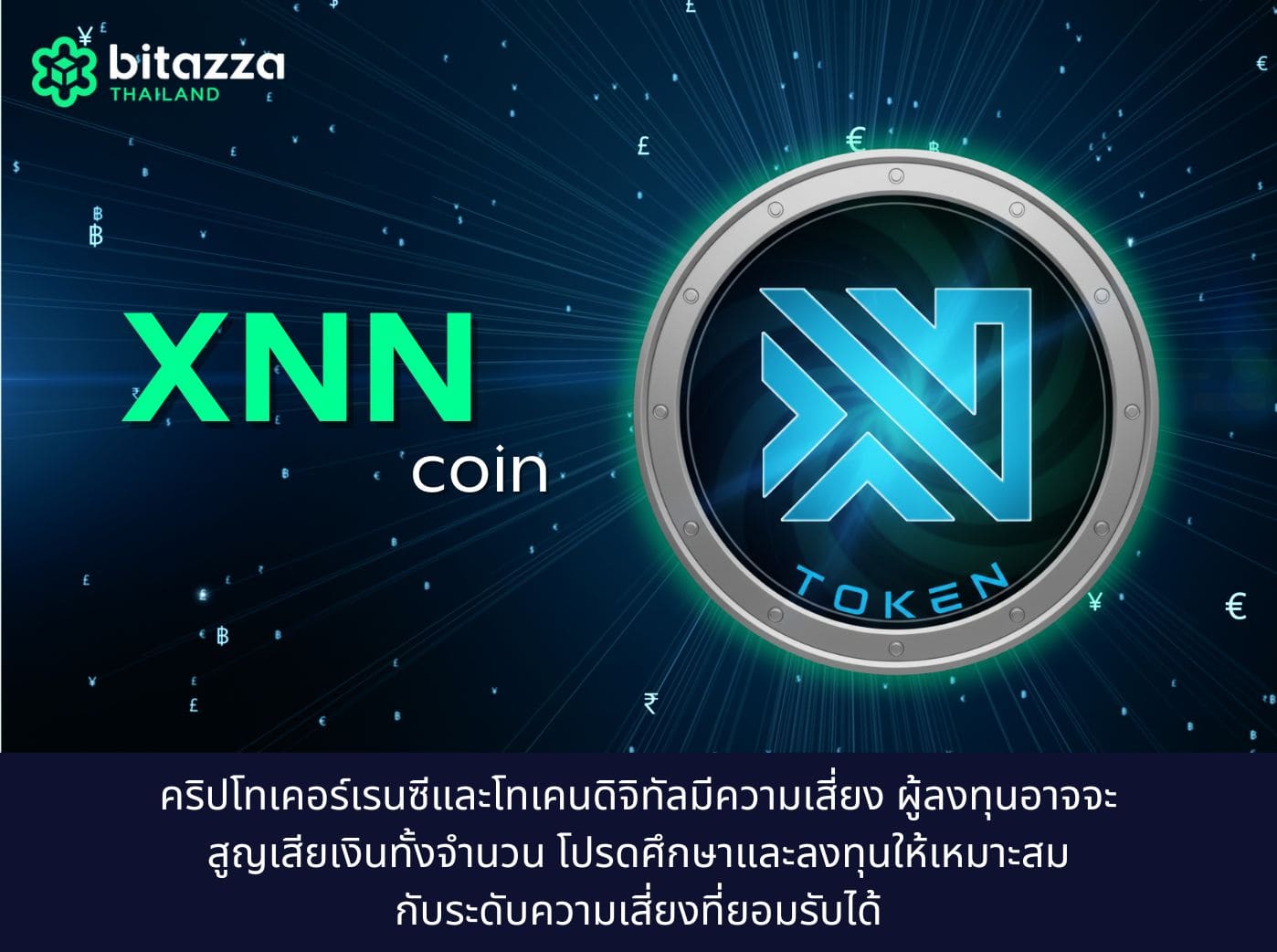
XNN Token คืออะไร? จากฝันการกระจายอำนาจ สู่ Dead Coin
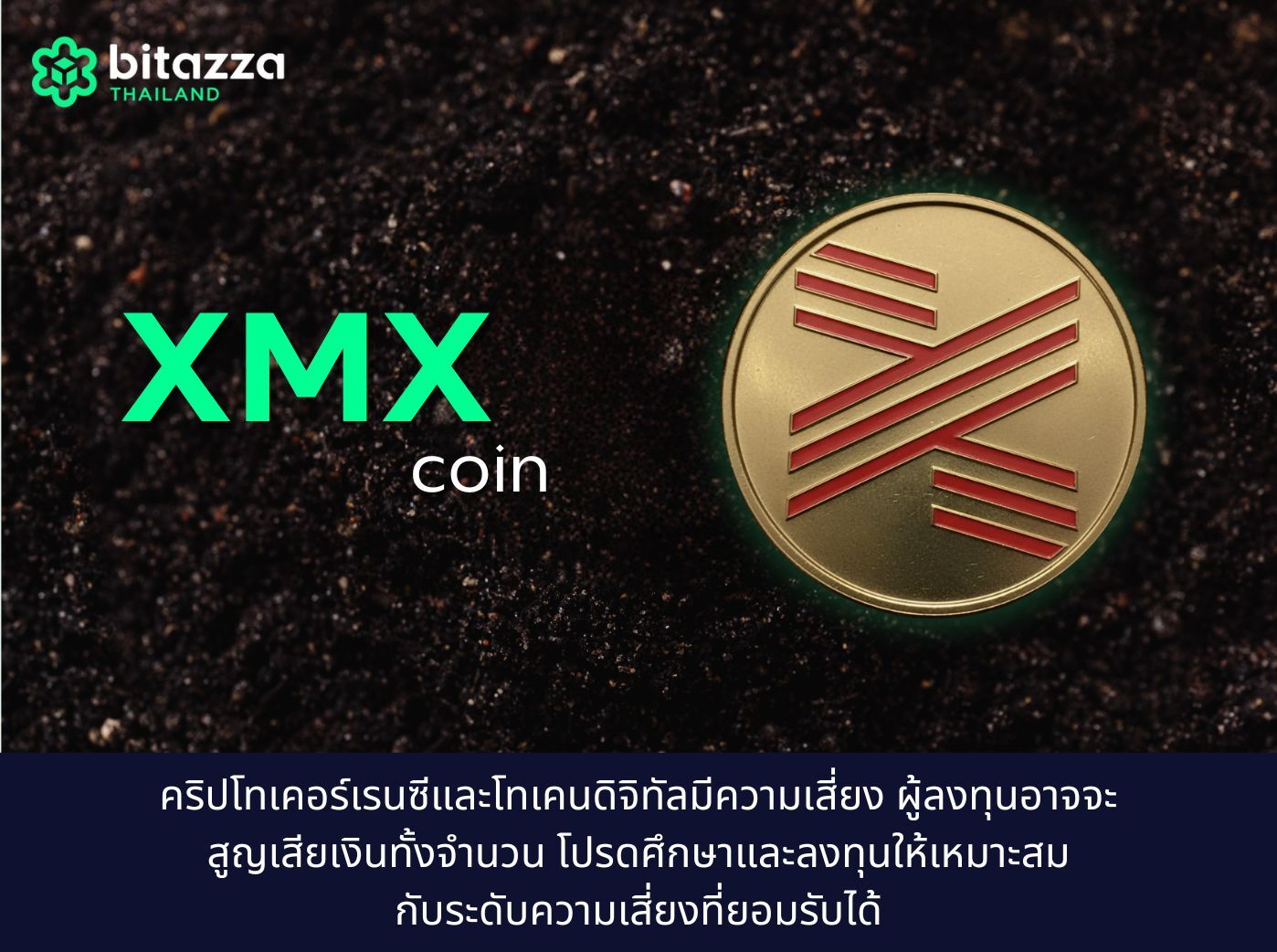
XMX คืออะไร เหรียญลับที่สายคริปโตพูดถึง โอกาสหรือความเสี่ยง
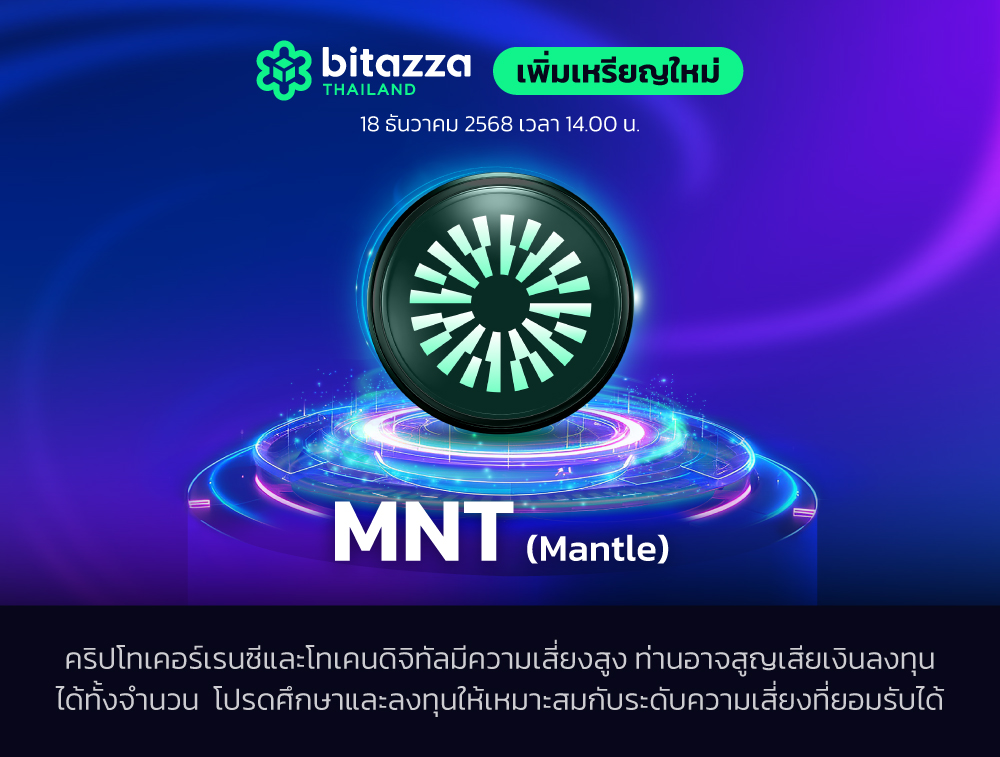
พบกับ Mantle (MNT) สะพานเชื่อมการเงินดั้งเดิมเข้ากับยุคใหม่บน Ethereum

พบกับ Monad (MON) สาย DeFi ที่มุ่งปิดข้อจำกัดการขยายตัวของ Ethereum
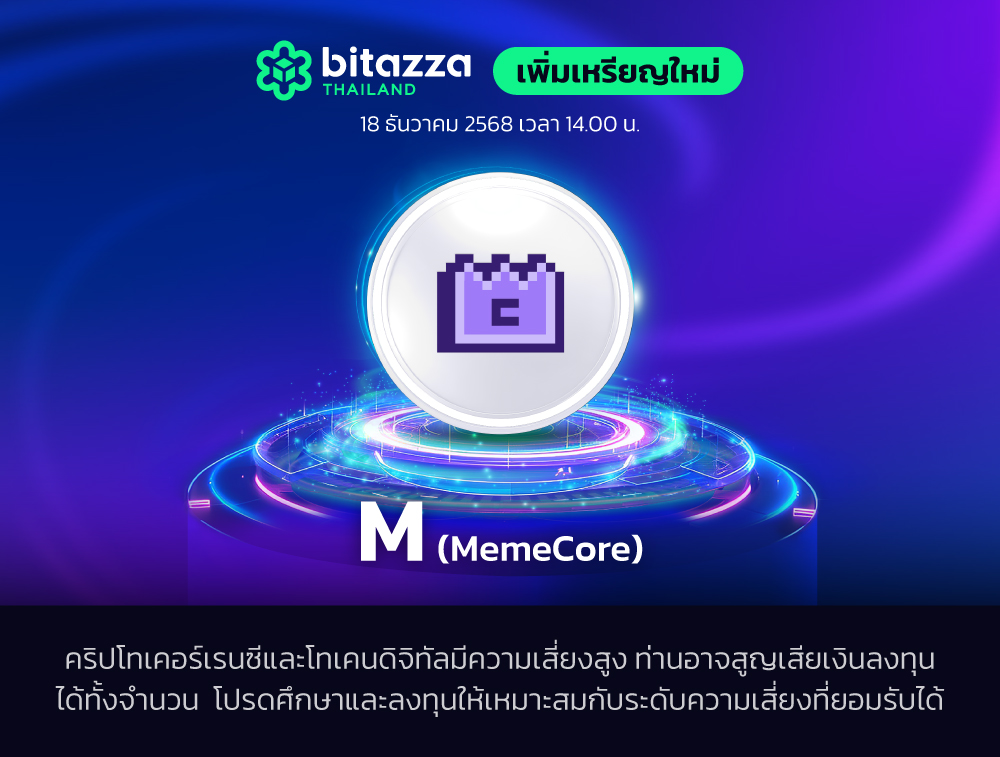
พบกับ MemeCore (M) บล็อกเชนเลเยอร์ 1 ตัวขับเคลื่อนยุค Meme 2.0

พบกับ Spark (SPK) ตัวจัดสรรเงินทุนบนเชน ผู้อยู่เบื้องหลัง DeFi, CeFi และ RWA
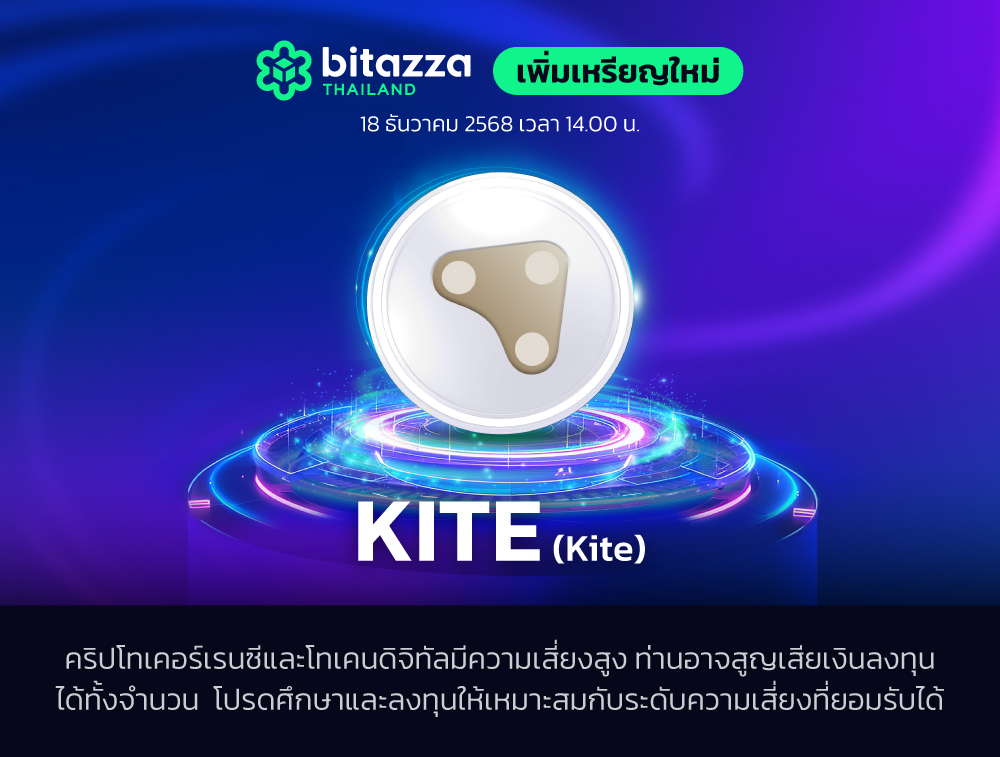
พบกับ Kite (KITE) โทเคนเพื่อ AI Agent อิสระ
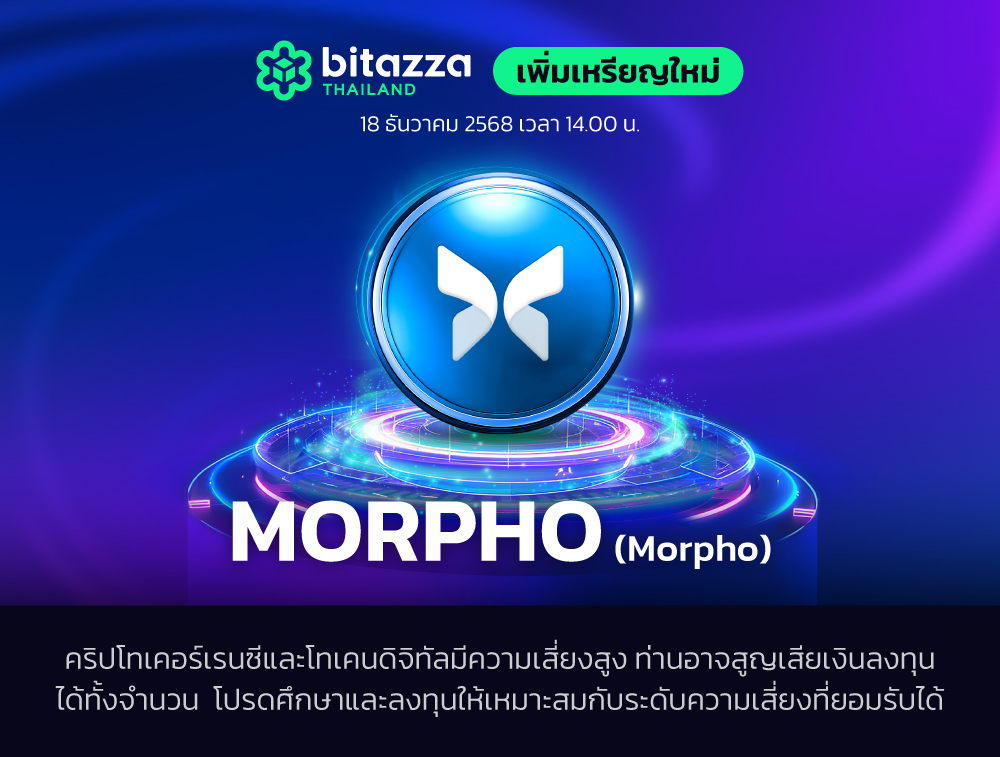
พบกับ Morpho (MORPHO) DeFi ด้านการปล่อยกู้ที่ตอบโจทย์ทั้งฝ่ายให้กู้และฝ่ายกู้
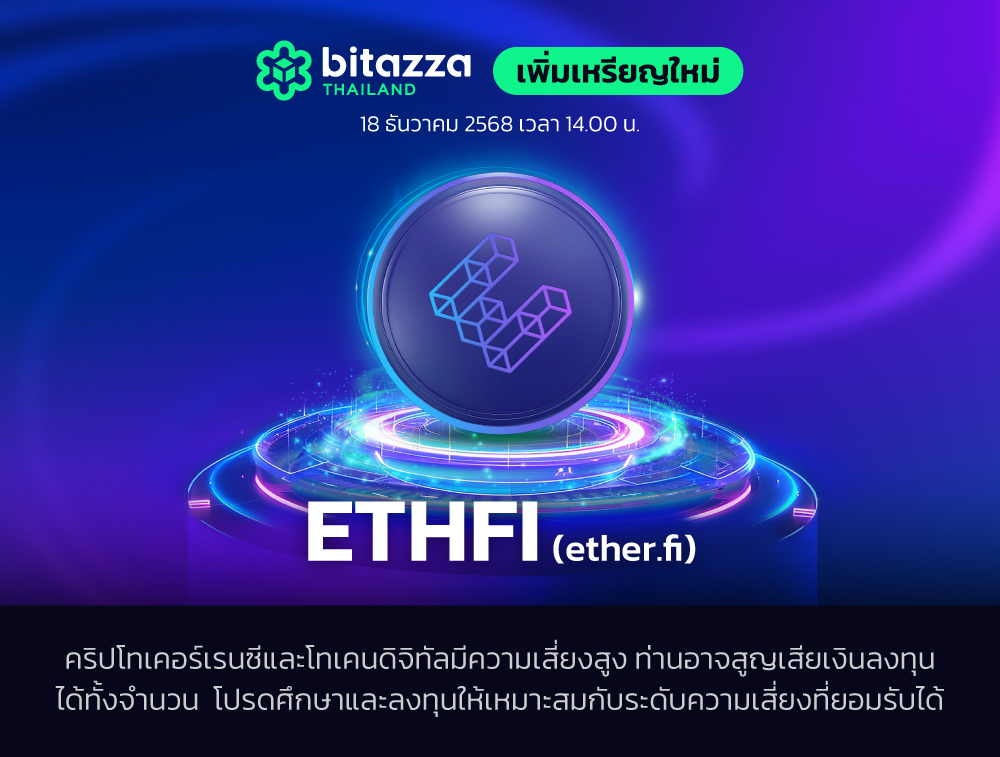
พบกับ Ether.fi (ETHFI) ทางเลือกใหม่ของการสเตก ETH ที่ยังเอาไปใช้ต่อได้
